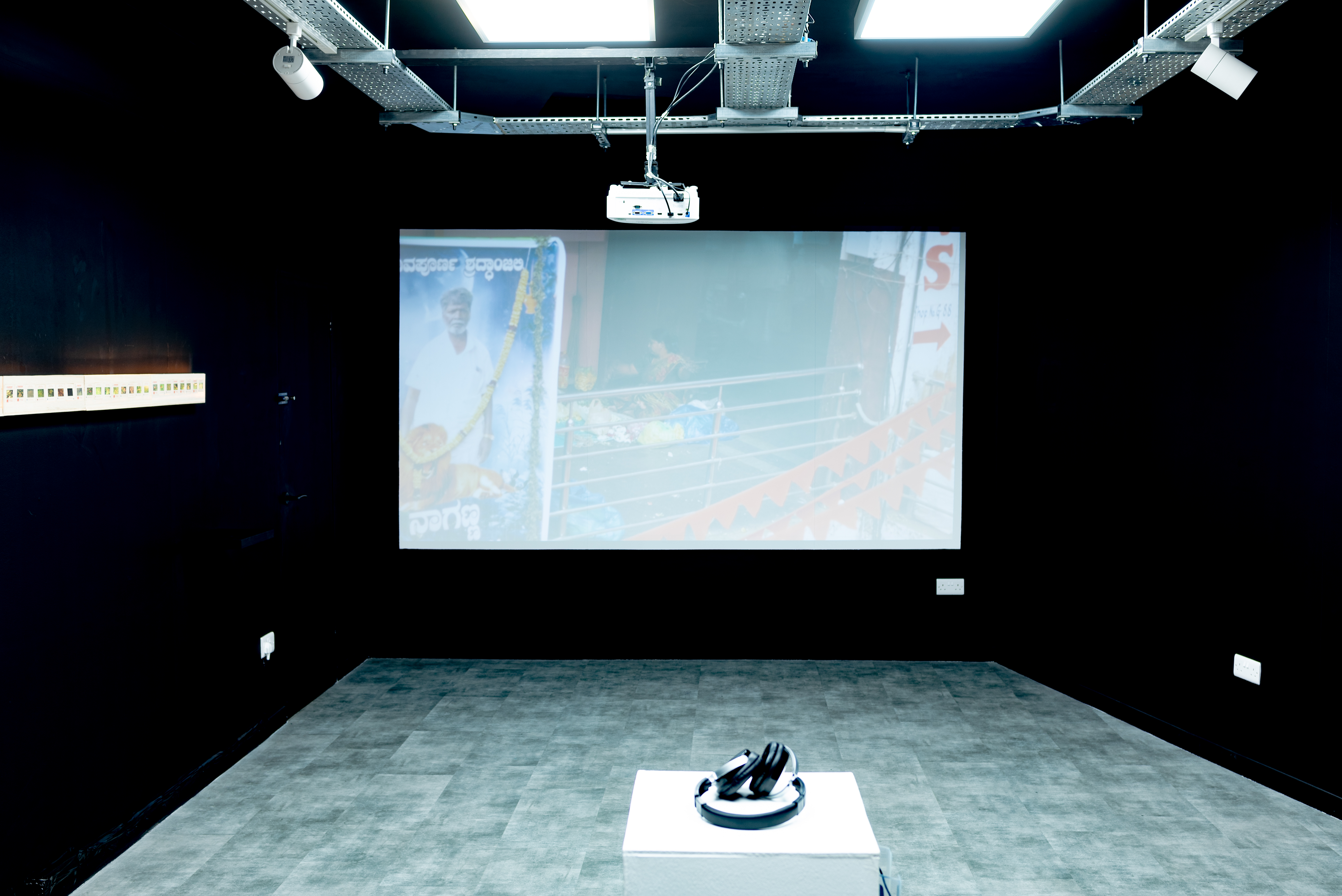THE SILENCE OF GROWING THINGS
Selected residency with Artcore Gallery Derby, UK and 1 Shanthi Road Gallery Bangalore, India in January 2024.
With contributions from Mila Samdub (Yale Law School, visting fellow), Suresh Jayaram (1 Shanthi Road, curator), Jeremy Seabrook (journalist).


Install shots, “The Silence of Growing Things” at Artcore Gallery, Derby (2024)
The Silence of Growing Things focusses on the historic relationship between London’s Kew Gardens -- the “control centre” for the British empire’s project of economic botany -- and its satellite botanic gardens in Bangalore. The works in this exhibition use the archive to reassemble a vast, forgotten colonial circuitry that placed the two cities at the centre of a global network of exchange and extraction. They see Bangalore’s gardens as ghostly blueprints for the globalised infrastructures of the city today: India’s “silicon valley”, an incubator for the apparatuses of digital India.
The works weave reworked archival and contemporary images and sounds with poetry, fiction, oral histories and voices of canonical writers and thinkers, sketching possible futures to throw light on the present and the possibility of resistance.”

“Arjuna will further delve into her ongoing exploration of India’s colonial history, aiming to unveil the implicit connections between the city’s ecology, its industrial complex, and its colonial past. She is intrigued by the lasting conceptual and ecological impacts of land development during the colonial era in Bangalore. Her objective is to scrutinise how choices in landscape architecture hav moulded the city’s spaces, symbols, and social dynamics.”
- Excerpt from curatorial text, Artcore Gallery
- Excerpt from curatorial text, Artcore Gallery
EXHIBITED WORKS



Untitled (Sketches)
Ink and pencil on primed paper, bone ash, magnifying glass in vitrine
2024
‘The Map is Not the Territory’ is a collection of drawings the artist made whilst on a residency in Bengaluru, India in January 2024. A collection of annotated observational drawings of the objects and structures she encountered during daily walks through the Lalbagh botanical gardens, the drawings provide a personal map, a record of an alternative physchogeography of the city.


Study of three botanicals
Oil on primed linen, wood, string
2024
Paintings of three plants imported to Bangalore’s botanical gardens as part of the British empire’s project of imperial economic botany. One of a vast network of botanical gardens the spanned across the British empire’s colonies, Bangalore’s botanic garden was run by Kew-trained botanists who would, over the course of many years, cultivate and acclimatise profit-yielding plants and seeds collected or stolen from across the empire in order to eventually export them as cash crops to be grown en masse on plantations. The specimen on the right is Ficus Elastica, the Indian Rubber Tree, which was brought to Lalbagh as part of an effort by the British to gain monopoly over the booming Rubber industry. These plant tell a story of appropriation, extraction, erasure and colonial violence.






Radicle City
HD digital video, looped
2024
The culmination of the artist’s research in Bengaluru, this film marks a shift in this exhibition from excavation of the past to speculation on the city’s future. Narrated as a poetic address by a voice who has grown up in a city without trees, the film imagines a future in which Bangalore’s gardens no longer exist. The film’s hybrid documentary and fictional narrative recovers and reinterprets footage of an unknown walker’s journey along Cubbon Park, the only remaining vestige of an old line of colonial segregation in the city. Moving restlessly back and forth between past and possible future, the film is at once an investigation into the city's complex colonial entanglements and their afterlives, and an elegy to the city’s gardens, fragile spaces of resistance in a metropolis which threatens their destruction.
Radicle City (2024) Screener
Offficial festival selections and screenings:
Artcore Gallery, Derby UK. May 2024
Antimatter [Media Art] festival, BC Canada. October 26-27, 2024.
Belvedere 21, Vienna, Austria. Oct 30, 2024.
SET Film Festival, London UK. Nov 7, 2024.
Deluge Contemporary Art Space. Victoria, BC, Canada. 30 Oct - 23 Nov, 2024.
Artcore Gallery, Derby UK. May 2024
Antimatter [Media Art] festival, BC Canada. October 26-27, 2024.
Belvedere 21, Vienna, Austria. Oct 30, 2024.
SET Film Festival, London UK. Nov 7, 2024.
Deluge Contemporary Art Space. Victoria, BC, Canada. 30 Oct - 23 Nov, 2024.
Extract from Q&A at SET Film Festival, ‘A Rich Seam’ (2024)
Watch full Q&A here